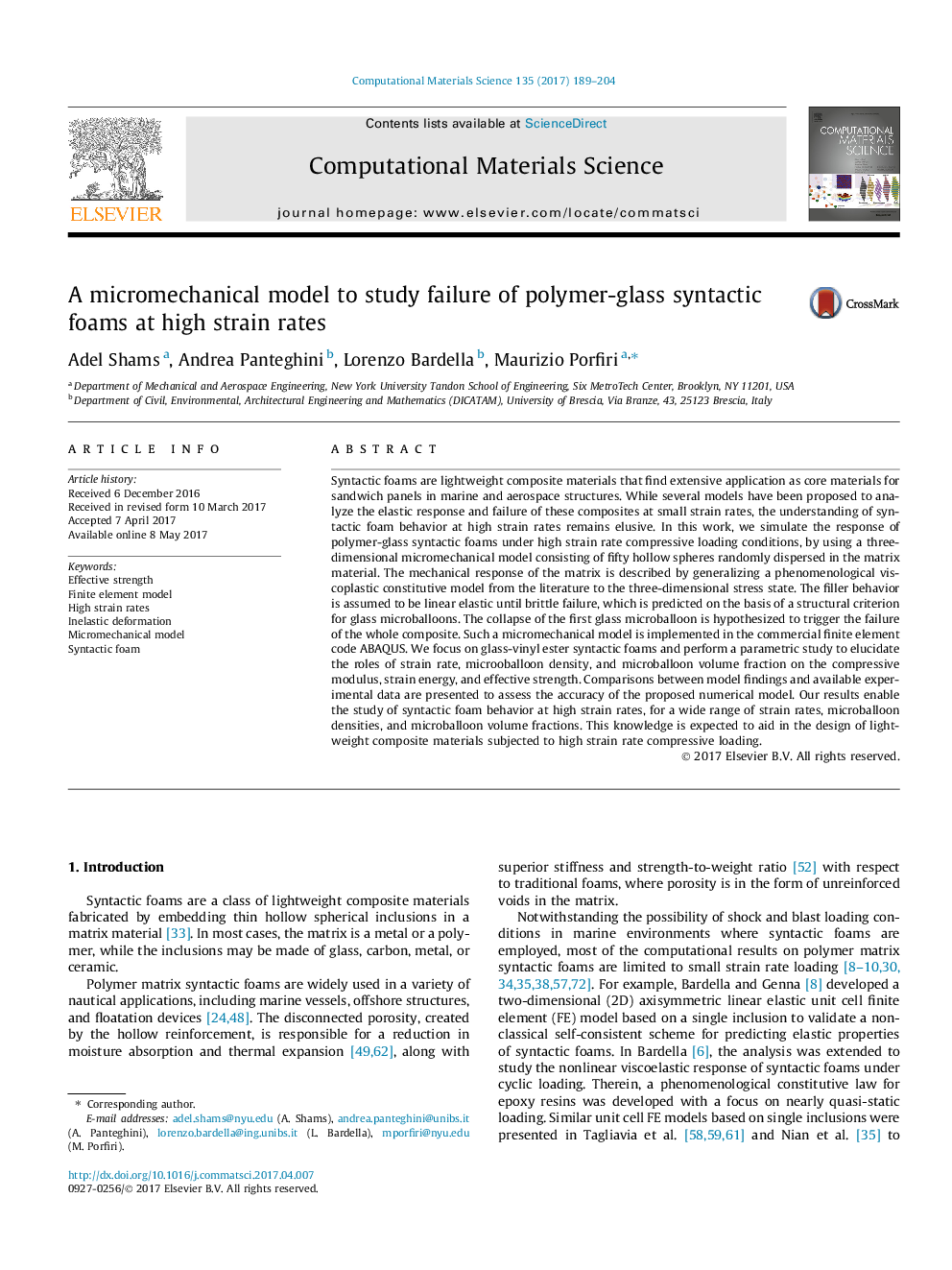| کد مقاله | کد نشریه | سال انتشار | مقاله انگلیسی | نسخه تمام متن |
|---|---|---|---|---|
| 5453200 | 1513877 | 2017 | 16 صفحه PDF | دانلود رایگان |

- We study polymer-glass syntactic foams at high strain rates.
- We formulate a finite element model with 3D multi-particle unit cells.
- A viscoplastic constitutive law is developed to model the polymer matrix.
- Brittle failure of glass microballoons is captured through a structural criterion.
- We study variations of strain rate, filler density, and filler volume fraction.
Syntactic foams are lightweight composite materials that find extensive application as core materials for sandwich panels in marine and aerospace structures. While several models have been proposed to analyze the elastic response and failure of these composites at small strain rates, the understanding of syntactic foam behavior at high strain rates remains elusive. In this work, we simulate the response of polymer-glass syntactic foams under high strain rate compressive loading conditions, by using a three-dimensional micromechanical model consisting of fifty hollow spheres randomly dispersed in the matrix material. The mechanical response of the matrix is described by generalizing a phenomenological viscoplastic constitutive model from the literature to the three-dimensional stress state. The filler behavior is assumed to be linear elastic until brittle failure, which is predicted on the basis of a structural criterion for glass microballoons. The collapse of the first glass microballoon is hypothesized to trigger the failure of the whole composite. Such a micromechanical model is implemented in the commercial finite element code ABAQUS. We focus on glass-vinyl ester syntactic foams and perform a parametric study to elucidate the roles of strain rate, microoballoon density, and microballoon volume fraction on the compressive modulus, strain energy, and effective strength. Comparisons between model findings and available experimental data are presented to assess the accuracy of the proposed numerical model. Our results enable the study of syntactic foam behavior at high strain rates, for a wide range of strain rates, microballoon densities, and microballoon volume fractions. This knowledge is expected to aid in the design of lightweight composite materials subjected to high strain rate compressive loading.
370
Journal: Computational Materials Science - Volume 135, July 2017, Pages 189-204